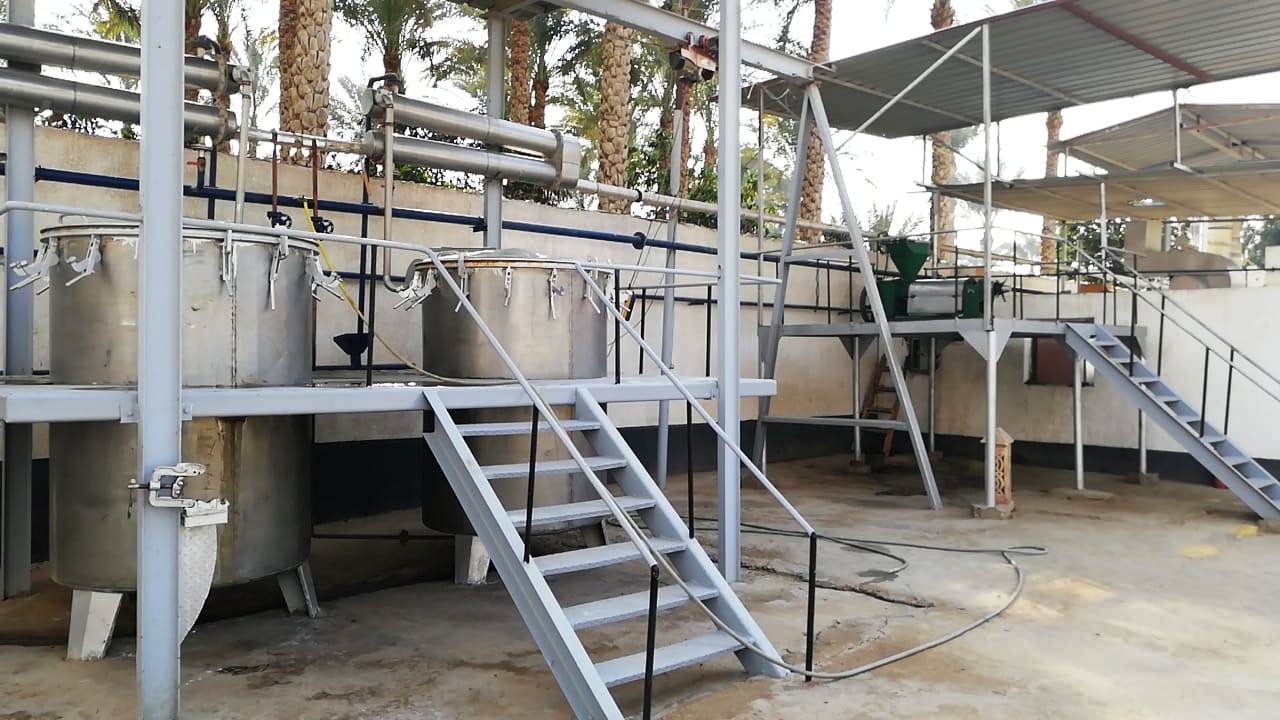Garlic Allium Sativum Essential Oil
Login to view prices
Common name: Garlic
Latin name: Allium sativum L.
Family: Liliaceae
Other names: Engl.: garlic, English garlic, poor man's treacle. Deu.: Knoblauch, Alterswurzel, Knobloch, Knofel, Stinkerzwiebel. Suom.: valkosipuli. Sven.: vitlök. Fran.: ail, ail blanc, ail cultivé. Span.: ajo.
Botanical Origin:
Common name: Garlic
Latin name: Allium sativum L.
Family: Liliaceae
Other names: Engl.: garlic, English garlic, poor man’s treacle. Deu.: Knoblauch, Alterswurzel, Knobloch, Knofel, Stinkerzwiebel. Suom.: valkosipuli. Sven.: vitlök. Fran.: ail, ail blanc, ail cultivé. Span.: ajo.
Description:
Garlic is an annual that can grow 2 feet high or more.
The Garlic plant have 6-12 long, narrow and flat like grass leaves. The leaves of garlic are erect, narrow, flat and bladelike, with a crease down the middle. The most important part of this plant for medicinal purposes is the bulb (subterranean reserve structure derived from a leaf).
The bulb consists of numerous bulblets, known as ‘cloves’ held between the papery membrane and enclosed within a whitish skin as a sac. Each bulb is made up of 4 to 20 cloves, and each clove weighs about 1 gram and with at least one flat side.
The flowers rise from a single central stem direct from the bulb and are white in color.
Range & Habitat:
Original habitat is obscure. Austria; Britain; Bulgaria; Canada; China; Cuba; Dominican Republic; Egypt; France; Haiti; India; Iraq; Kurdistan; Malaya; Mexico; Pakistan; Panama; Paraguay; Puerto Rico; Russia; South Africa; Spain; Trinidad; Turkey; USA; Venezuela
Egypt has been a major producer during the past two decades.
Garlic prefers a sunny position in a moist, light, well-drained soil with a pH of 4.5 to 8.3. It can tolerate periods without rain, but best results come from plants that receive regular watering. The site selected for planting garlic must have excellent drainage and adequate sunlight.
Planting & Cultivation:
Garlic never produces fertile seeds and must be propagated by dividing the bulbs into individual cloves carefully and planting each clove as a set. It is grown as an annual and planted from September through February.
Condition the soil with lots of organic matter, bone meal etc one or two weeks before planting. Add more sand if the soil is clayish. Individual Cloves can be planted 2-3 inches deep with their noses just below the soil surface and 4-6 inches apart. Damaged cloves should not be planted to avoid diseases or pests.
Harvesting and Preparing for the Market:
Harvest is usually sometime from mid-July through August, about nine months after planting depending upon conditions and the type of garlic. Bulbs should be dug-up when 2-3 leaves turn brown. Be careful not to bruise or injure the bulbs, dig carefully beside the plant and then underneath it with a spading fork to loosen the plant, lift the bulb up and gently remove excess dirt.
Garlic with the entire bulb and stalk, must be well dried and cured after harvest, before being stored. Tie the garlic stalks together about a dozen in a bundle, and hang them up to be dried for two to three weeks in an airy well-ventilated location not under direct sunlight. Once dry, the roots should be trimmed off and the stalk removed about an inch from the head. Bulbs store best with good air circulation on all sides. Bulbs to be saved for later planting can be stored in a plastic bag in the refrigerator for up to 8 months. Fresh garlic is best stored in an open container in a cool, dark place. Bulbs should be able to keep for eight weeks at a time – whereas if you break the cloves off individually, they will begin to dry after about three days
Yield:
One acre yields from 7.2 to 8.5 tons in average.
Method of Extraction:
By Steam Distillation.
Garlic Oil is produced by steam distillation of the crushed garlic, the bulbs of Allium Sativum. Fresh bulbs are preferred for distillation.
The yield of volatile oil from Garlic cloves is 0.1% to 0.2%, however distillation of the whole plant gave from 0.05 to 0.09 % of oil.
Notes:
- The total diallyl sulfides (mono to hexa sulfides) are about 57%
- The total allyl methyl sulfides (mono to hexa sulfides) are about 37%.
- The total dimethyl sulfides (mono to hexa sulfides) are about 6%.
- Garlic Oil is a colorless to pale yellow mobile liquid and it has an extremely intense obnoxious odor, to a certain degree reminiscent of garlic, but with a predominant mercaptane like note which masks the delicate, although strong and highly diffusive garlic odor. It is not lachrymatory, but simply so obnoxious that it scares even garlic enthousiasts.
- It has been proven that the oil contain no allyl sulfide at all, but a number of disulfides and trisulfides chiefly diallyl disulfide. Allicin does not occur as such in whole garlic bulbs, but in the form of a thermostable precursor, alliin, which have no antibacterial properties. However, when garlic cells are crushed, alliin, under the influence of the lyoenzyme alliinase, is rapidly broken to the antibacterial allicin and the typical odor of garlic appears.
- Allicin is rather unstable; it can be isolated by steam distillation only at reduced pressure. Allicin possesses an odor characteristic of garlic but not obnoxious. On steam distillation at atmospheric pressure allicin is decomposed to diallyl disulfide and other disulfides, which explains why the volatile garlic oil obtained by steam distillation of the bulbs or of the whole plant consists chiefly of obnoxious disulfides.
Phases of manufacturing the Garlic Oil:
Preparation of the Herbs:
- The bulbs are collected from our farms or from other authorized farms we supervise
- The bulbs are screened & the best are selected.
- The moisture level of the bulbs is reduced to the optimum by a drying process.
Steam distillation Phase:
- The bulbs are put in steam distiller.
- The oil gets collected into the Collection tank.
- The Oil is transferred to Drums from the collection tank and allowed to settle.
Filtration phase:
- The settled oil is then transferred to separate Drums and the oil is filtered mechanically passing through a Filter Press.
- The filtered Oil is collected into Iron Drums and Stored in air-tight condition
Export Markets:
We export our oils to many countries all over the world. USA, France, Germany, China, Malaysia, Algeria, Morocco, Indonesia…etc
Quotation:
- Incoterms: FOB Egypt or China
- Quantity: More than 200 L Minimum
- Specification: 100% natural and Pure quality
- Documentation: COA, MSDS, TDS, GC Peaks
- Packaging: Bulk in 180,60,25 liters Packs or retail packaging upon request
- Payment terms: TT in advance to Our bank account
- Lead time: Shipping through 10 days from receipt of the payment.
- Sea Shipping Time: 35 days
- Air shipping time: 10 days
Quality Certificates:
- ISO 9001-2015
- ISO 22000-2005
- GMP accredited by AQC Middle East FZE
- KOSHER Certificate
- Halal Certificate
- ORGANIC Certificate accredited by CERES GmbH Germany
- NOP Certificate accredited by CERES GmbH Germany
- Egyptian Ministry of Health Permission
Contact us please to receive other supporting documents for our Oils :
- COA
- MSDS
- TDS
- GC Peaks
Branding Services
We also can do customized packaging for you to bottle whatever size you like. We can help in designing labels, selecting good bottles, and packaging. We deliver integrated solutions under your brand..
Organically Certified Oil Available upon request
Additional information
| Weight | N/A |
|---|---|
| Dimensions | N/A |
| Oil Purity | 100% Natural & Pure without any chemical, flavor, food additive or carrier. |
| Ship from | China, Egypt |
| Country of Origin | China, Egypt |
| Cultivation Type | Organic Certified, Conventional |
| Oil Bulk Packaging | 180 kg Steel Drum, 25 kg HDPE Plastic Jerrycan, 50 kg HDPE Plastic drum |
| HS Code | 33012947 |
| CAS Number | 8000-78-0 |
| Oil Documentation Available | Allergen Free Certificate, Bovine Spongiform Encephalophathy (BSE) Certificate, Certificate of Analysis (COA), GMO Certificate, GRAS Status Statement, Halal Certificate, Herbal Origin Statement, KOSHER Certificate, Manufacturing Flow Chart, Material Safety Data Sheet (MSDS), Organic Certificate, Pesticide Residual Certificate, Researches & Studies, Technical Data Sheet (TDS), WADA Prohibited list Statement |
-
Login to view prices
-
Login to view prices
-
Login to view prices
Rose Infused Oil (Natural Rose oil or flowers infused in Carrier Oil)
Login to view prices Read more -
Login to view prices
-
Login to view prices
-
Login to view prices









